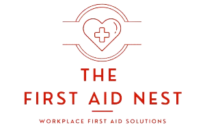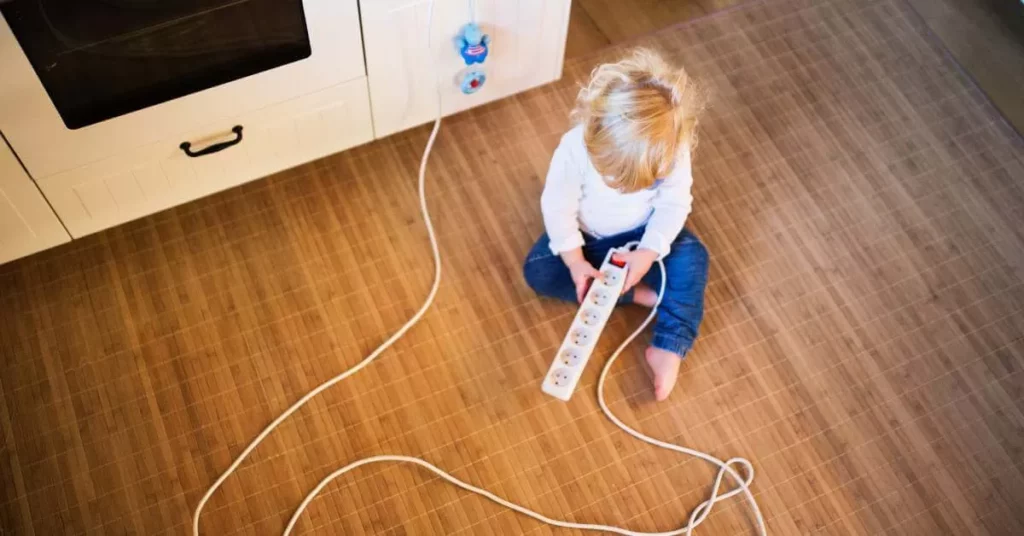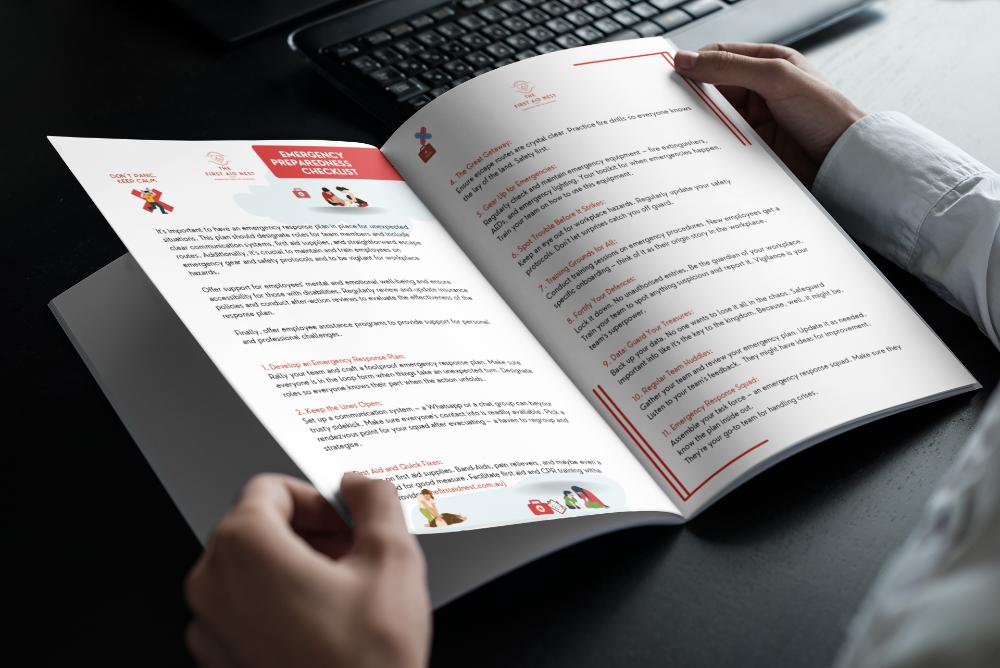Electrical Safety: First aid and Prevention For Curious Toddlers

The home, a haven of comfort and familial warmth, can also harbor unanticipated dangers, particularly when it comes to electrical safety. This is especially important for families with young children, particularly toddlers.
Toddlers, with their insatiable curiosity and proclivity for exploration, are frequently drawn to electrical outlets, cords, and appliances.
While this innate sense of wonder is a hallmark of healthy cognitive development, it can unintentionally expose them to potential hazards such as shocks or burns. To protect these young explorers, parents and guardians must recognize these risks and ensure that their homes are as electrically secure as possible.
Understanding The Risks

Understanding the potential hazards is critical when it comes to electrical safety, especially for toddlers. Many people use the terms “shock” and “electrocution” interchangeably, but they have different meanings.
An electrical shock is a sudden and often painful sensation caused by electricity passing through a person’s body. It can range from a mild tingling sensation to severe pain, and it may or may not cause long-term damage.
Electrocution, on the other hand, denotes a fatal or near fatal event in which the amount of electrical energy passing through the body can cause death. It is critical to be aware of these distinctions.
Furthermore, because of their natural curiosity, toddlers frequently find themselves in situations that expose them to these dangers:
- Playing with electrical outlets: Toddlers are naturally drawn to outlets, trying to poke or prod them.
- Biting or chewing on cords: For teething toddlers, cords can be tempting to chew on, posing potential danger.
- Inserting metal objects into sockets: Common household items like keys or paper clips can become hazards in tiny hands.
- Playing near wet areas with electronics: Bathrooms or kitchens with stray gadgets can be risk zones if toddlers play around them.
How to Prevent it?

For parents and guardians, the safety of their young ones is paramount, and this means taking proactive measures to ensure the home environment is free from electrical hazards. One of the most effective measures is childproofing, which entails creating barriers or adopting practices to mitigate risks:
A. Covering outlets:
- Importance of outlet covers: Electrical outlets are at the perfect height for prying toddler fingers. Outlet covers act as a barrier, preventing any inadvertent insertions and potential shocks.
- Different types of covers available: The market offers an array of outlet covers, from the basic plug-in types to more advanced designs like sliding or self-closing outlet plates.
- Recommendations for effective use: Ensure the covers are securely fixed, challenging for toddlers to pry open, and regularly inspected for any damages or inefficiencies.
B. Safe storage of electrical appliances:
- Keeping them unplugged when not in use: An inactive, unplugged appliance is the safest. It not only conserves energy but also negates any accidental operational risks.
- Storing in high, inaccessible places: Elevating appliances, such as toasters, hairdryers, or microwaves, onto higher shelves or in locked cabinets ensures they remain out of the reach of young explorers.
C. Securing cords:
- Using cord organizers or protectors: These devices help consolidate cords, reducing the temptation for toddlers to pull or chew on them. They also protect cords from wear and potential damage.
- Keeping cords out of reach: By rerouting cords behind furniture, or elevating them, we can eliminate the risk of toddlers tripping or playing with them.
D. Educating older siblings:
- Making them aware of the risks: The innate curiosity of toddlers might be unknown to older children. Informing them helps in nurturing a protective instinct.
- Teaching them to keep their electronic devices away from younger ones: As tech-savvy as today’s children are, their gadgets can pose risks. Older siblings should be advised to store and charge their devices in designated areas, away from the reach of their younger counterparts.
First Aid: What to Do in Case of an Electrical Injury
When an electrical injury occurs, prompt and appropriate action can make all the difference. While prevention is still the best defense, knowing what to do in an emergency can help mitigate the consequences and potentially save a life:

A. Immediate actions:
- Disconnecting the power source: Before approaching the child, it’s paramount to ensure that the power source is disconnected, either by unplugging the device or switching off the circuit.
- Checking the child’s breathing and responsiveness: Once safe, promptly assess the child’s condition. Check for signs of breathing, responsiveness, and any visible injuries.
B. Administering CPR (if required):
- Basics of CPR for toddlers: The CPR procedure for toddlers differs from adults. Ensure you’re trained to give compressions and breaths at the appropriate rate and depth suitable for a child’s physique.
- When and how to perform: CPR should be initiated if the child is unresponsive and not breathing. However, it’s crucial to be trained in pediatric CPR to ensure its effectiveness and safety.
- Difference between electrical burns and regular burns: Electrical burns can be deceptive. While they might appear minor on the surface, the internal damage can be extensive due to electricity’s path through the body.
- First aid steps for electrical burns: Do not touch the burn directly. Cover the area with a sterile non-stick bandage. Do not use water or any ointment on electrical burns.
D. When to call emergency services:
- Recognizing severe symptoms like unconsciousness, trouble breathing, or severe burns: Any of these symptoms post an electrical incident signifies a medical emergency.
- Importance of immediate medical attention in such cases: Even if a child seems fine after an electrical shock, underlying injuries might not be immediately apparent. It’s always best to consult a medical professional for a thorough evaluation.

Our Baby First Aid course
Our baby first aid courses are available in person in your home and online.
We run classes in your home with groups of 2, 4 or up to 10 in Sydney & Melbourne and you can book in 3 easy steps!
- Pick your class
- Follow the prompts to purchase
- We will contact you within 24 hours to lock in your date of choice
Here are some other resources you may enjoy!
FREE GUIDE: Your Virtual Baby First Aid Kit
FREE GUIDE: Introducing Common Allergy Foods & Allergic Reactions
Book a baby & child first aid class
Online Baby & Child First Aid


